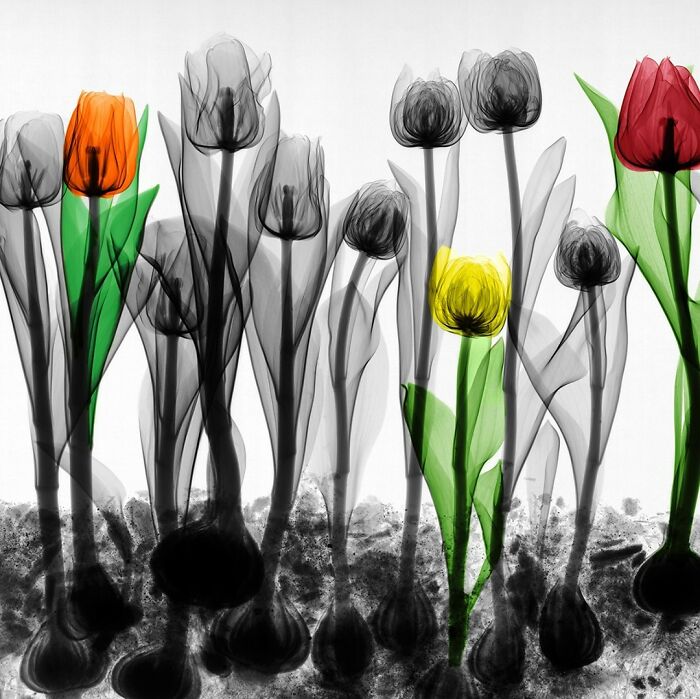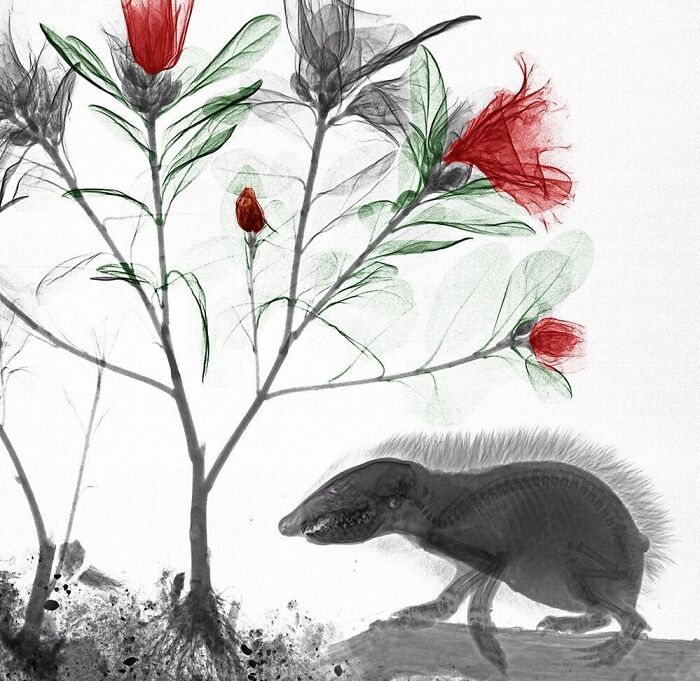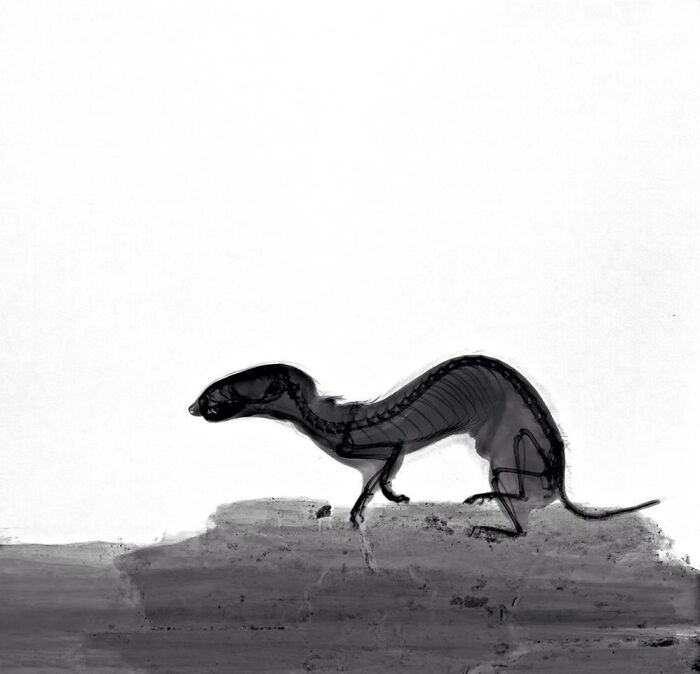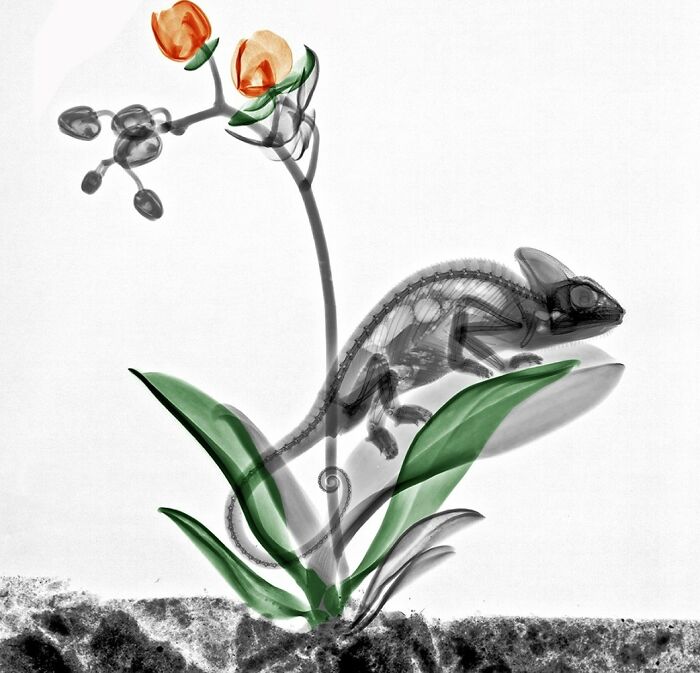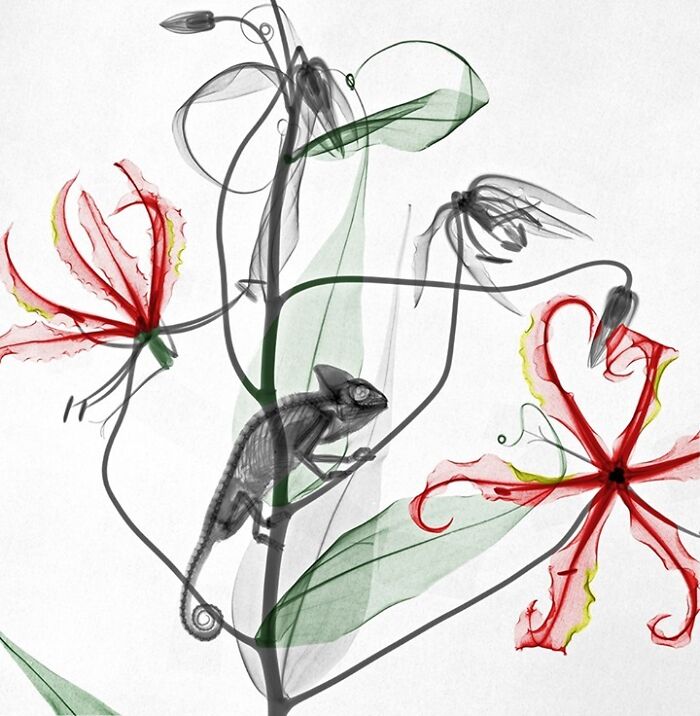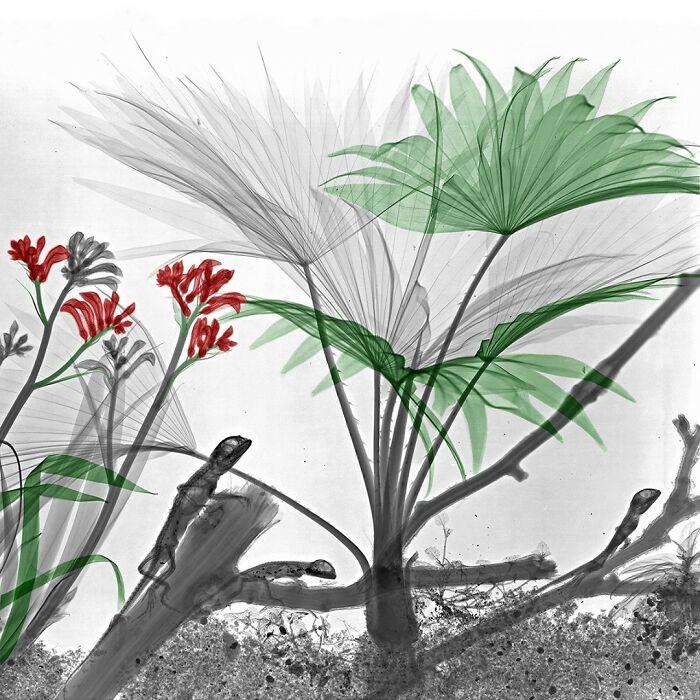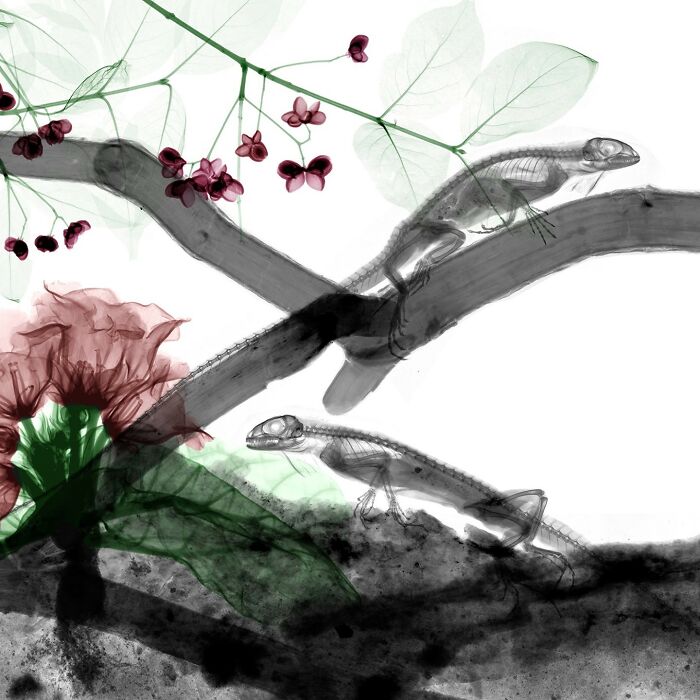
32Kviews
30 X-Ray Images Of Nature Taken By Former Medical Physicist Arie Van ‘T Riet
Interview With ArtistNature is fascinating and being able to study it from different perspectives is an opportunity not many people get. Luckily for us, we get to see the enchanting results of those explorations that are no less valuable than the journeys themselves.
In this article, we want to showcase the enchanting photographs taken by Dutch physicist Arie van 't Riet. He is a man whose work had taken him on a journey to becoming an artist. Arie specialized in low-energy X-rays in hospitals when he hit upon an interesting form of art. The artist went on to x-ray flowers, insects, lizards, turtles, cats and other animals, creating beautiful works of art he calls "bioramas".
Arie wanted to point out that his floral-animal x-ray images are not made in the hospital, but in his studio where he has his own x-ray equipment with a license. As a medical physicist, the artist worked in the hospital from 1978 – 2012 in the departments of radiology, nuclear medicine and radiotherapy. The x-rayed animals are dead. "In my opinion, it’s not justified to expose living animals to the risk of x-rays for my purpose. I find traffic victims along the roadside. A friend breeds reptiles. In case one dies, I can have it. I buy fish on the market and insects - in specialized shops."
More info: Instagram | xrayimagesofnature.nl | Facebook
This post may include affiliate links.
Ray
Arie's x-ray images are not composed of different layers. "It is not a composition of different x-rays. No stacked images. Not assembled. The complete setup of the natural scene (biorama) with animals and flowers is built and x-rayed in one session as a whole. I apply an analog technique and use Silvergelatine x-ray negatives. Kodak X-Omat V 33cm x 41cm."
Dragonfly
Wise Barn Owl In Oak Tree
Arie's idea to x-ray flowers and animals was born in the hospital. "I was involved in the teaching program on radiation physics and radiation safety for radiographers and physicians. I think in 2000 I started to challenge the students to x-ray flowers. It was a nice exercise demonstrating that even very thin objects can be imaged by x-rays. For this application, very low-energy x-rays were required. So it was for educational reasons that I started to x-ray flowers.
In 2007 I got my own studio with x-ray equipment. From that moment on I started to build complete nature scenes (bioramas) with plants, flowers and (dead) animals. I x-rayed the bioramas, digitized the greyscale x-ray negatives and partly colored them with Photoshop. So, I think 2007 is the starting point of my artistic x-rays."
Field Of Tulips
Young Hedgehog
If you wonder how these images are made exactly, Arie has an elaborate explanation for you!
Firstly, the artist samples plants, flowers, dead animals, etc. All the collected objects are then arranged upon an x-ray negative (33cmx41cm), packed in a light, tight envelope. This staged natural scene (biorama) is placed on the floor, the x-ray tube is positioned at a distance of about 1m above it. Beam on and an x-ray is made.
Mouse On Amaryllis Flower
Two Crows
Afterward, in a dark room, the x-ray negative is taken out of the envelope and is put into the processing machine, resulting in a black and white x-ray image. The x-ray image is then digitized using a Vidar scanner (570 dpi, 12 bit). After that, the image is inverted and partly colored using Photoshop, and the result of that you can see yourselves!
Bat
Kingfisher
"It all starts with the availability of an animal. When I find an animal I start collecting attributes (plants, flowers, etc.). Next, I build the biorama. Then I do some radiation measurements and make some x-ray tests to find the optimal x-ray technique (dose and energy). I estimate that the whole procedure from finding the animal to the partly colored x-ray takes about 2 full days."
Heron In Flight
Those wings look incredibly delicate, but let me tell you, when a heron takes flight from a spot 2m away from you, the sound of its wings flapping is loud and primordial and induces immediate terror.
Snails
The most challenging part of the creative process for Arie is making the composition. "Usually, I want to make a still life that looks realistic." The moment the artist really enjoys is when the negative comes out of the processing machine for the first time. "That's the very first time I see the scene in X-ray. I am delighted and relieved when I succeeded. Unfortunately, it has to be repeated regularly because a leg turns out to be positioned wrong (unnaturally), or something similar. Then I have one negative less. And analog silver bromide films are becoming scarce and expensive."
Protea And Python
Yemen Chameleon In Front With Thistles In The Background
"I love nature. It is amazing to see on x-rays the complex, wonderful and functional anatomy of animals. And all the similarities. Look at the elbow, knee, etc. of a reptile, bird, etc. all the same as the human. They all have the same setup, the same building plan. Even the trachea of the snake shows a construction like mine. I hope the x-ray images will contribute to the interest in nature."
Frog Sitting On A Leaf Of Water Lily
Dragonfly And Allium
Arie's images were published in a children's book by Gottmer publishers in 2017. In 2021, his work was published in English by Greystone Kids, titled "Inside In", and in June 2022, a second book titled "Doorgelicht" was published in Dutch by KNNV publishers for a wide audience of all ages interested in nature. Arie's images will also be exhibited in the Natural History Museum in Rotterdam from November 2022 – February 2023.
When it comes to the future, Arie would be very happy if he could get some (small) exotic animals from the zoo, like a flamingo, cockatoo, meerkat, etc. to make some new images!
Octopus
Barn Swallow
Salamanders, Frogs, Bumblebee, Water Beetle, Sword Flag And Water Gentian
Nautilus
Cormorant
Turtles
The way the bones of the limbs are different in the different postures!
Pomfret Seaweed
Parakeets On Orchid And Gloriosa
Cutlassfish
Duck Near Riverside
Barn Swallow
Interesting to see the relationship between the bones and the feathers!
Black-Winged Stilt
Frog Climbing Chamaerops
Ermine
Cormorants
I love these so much! I would put them all over walls! Stunning! Tysm for sharing!!!
These were incredibly beautiful and fascinating. What a creative concept. I would love prints of some of these.
I love these so much! I would put them all over walls! Stunning! Tysm for sharing!!!
These were incredibly beautiful and fascinating. What a creative concept. I would love prints of some of these.

 Dark Mode
Dark Mode 

 No fees, cancel anytime
No fees, cancel anytime 
















